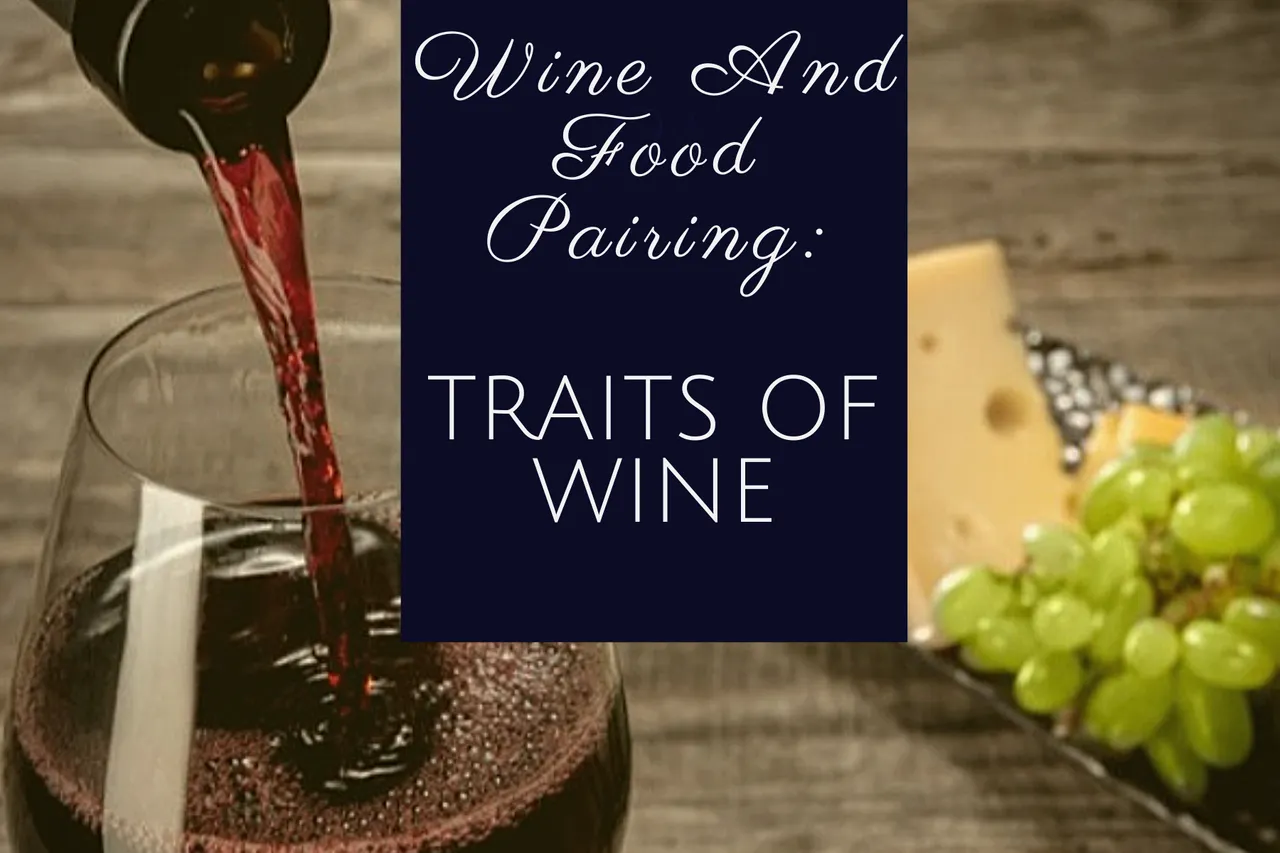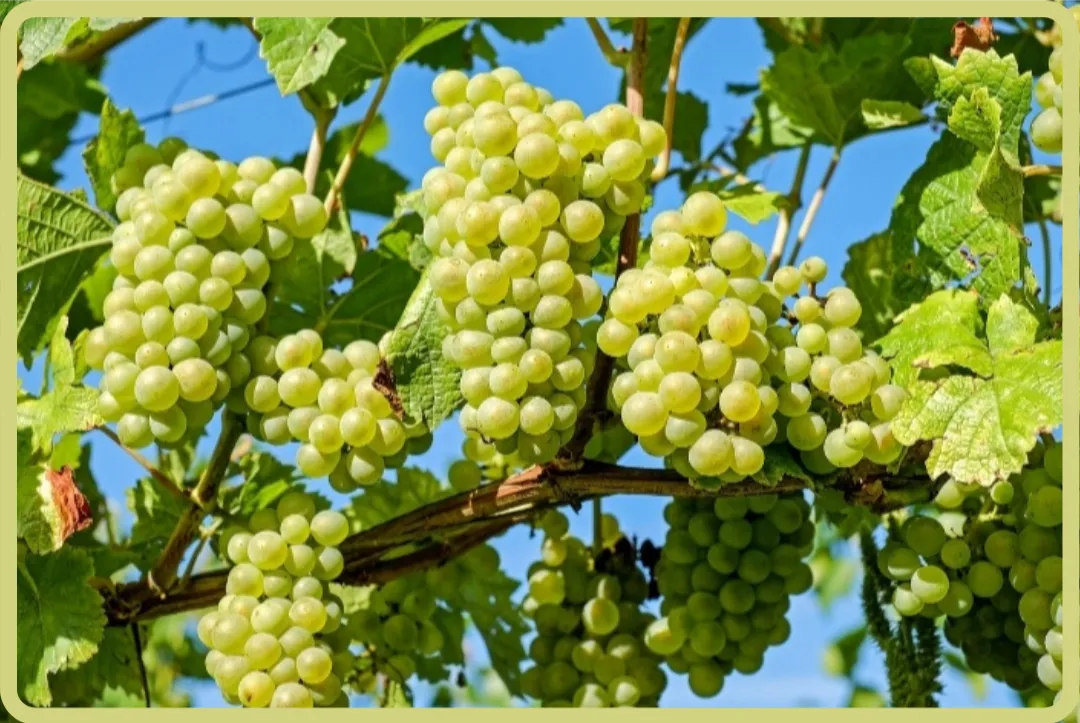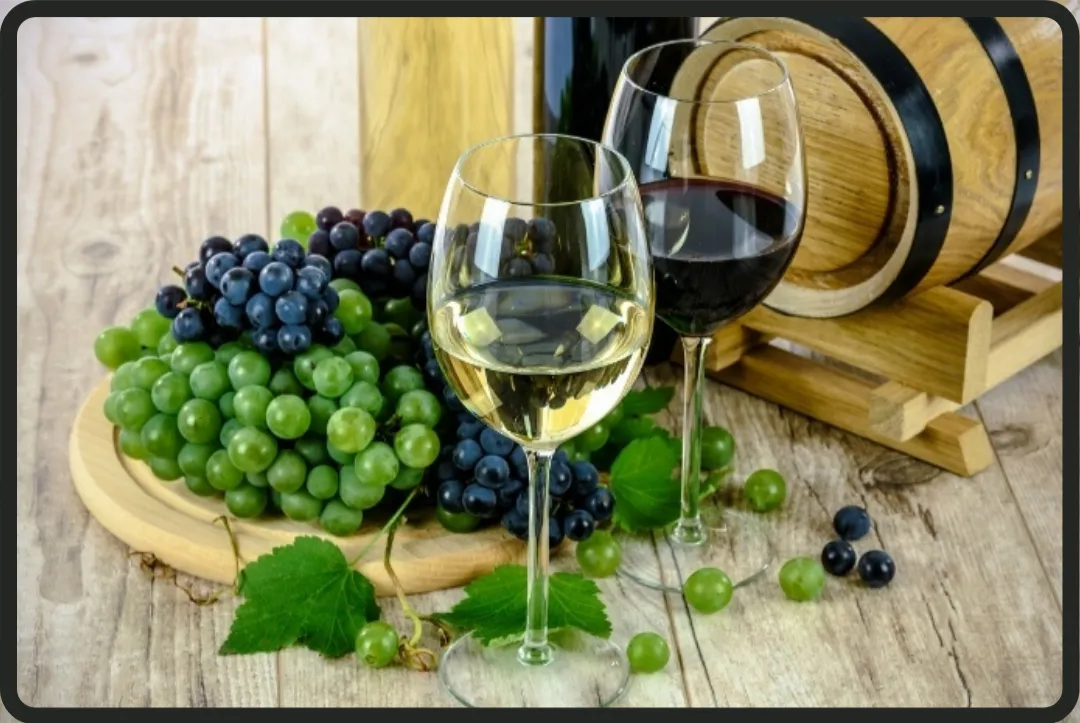
Happy weekend Bees! I decided to embark on a little research on pairing food and wine. I'd always had interest in wine and hopefully will visit a vineyard someday. The result of my search is in three parts. This post on wine traits is the first.
A meal without wine is like a day without sun ~ Anthelme Brillat-Savarin
Drinking of wine is as old as time, if I may say so. Wine is an alcoholic beverage made from fermented grapes. Technically, wine can be made with any fruit, but most wines are made with wine grapes. Just so you know, wine grapes are different from the table grapes you are familiar with.
These wine grapes are smaller with lots of tiny seeds in them and sweeter than table grapes. A lot of effort and process goes into winemaking.

A bottle of wine can be produced to last for years. This is because there is a small portion of sulfur dioxide (sulfites) added as a preservative besides fermented grape juice. The older the wine, the more pricey or expensive it is.
Wine is usually drunk alone and even better enjoyed with a meal. There is a science to pairing food with wine. You cannot drink any kind of wine with any food. A great pairing can lift both the wine and accompanying dish into another plane, heightening flavours and aromas.
This thesis which is split into three parts seeks to explore the traits and types of wine, the health impacts and how wines are paired with food.
WINE TRAITS:
Every bottle of wine has five (5) basic traits or characteristics. They are sweetness, acidity, tannin, alcohol and body.
Sweetness - In wine, the sweetness is derived from residual sugar, that is, the leftover sweetness when all the grape is fermented into alcohol. The level of sweetness differs and depends on the acidity of the grapes. Wines with lower acidity taste sweeter than wines with higher acidity.

Acidity - Acids in wine come from grapes including tartaric, malic, and citric acid. They are the primary attributes that contribute to wine’s tart and sour flavour. The acidity of a wine is determined by the pH scale, ranging from about 2.5–4.5 pH (7 is neutral).
One useful thing to know about acidity in wine is that, as grapes ripen, they become less acidic and sweeter. Thus, a wine from a cooler climate where it’s hard to ripen grapes will produce wines with higher acidity.
A wine with a pH level of 3 has ten times more acidity than a wine with a pH level of 4. This means the higher the pH level, the lesser the acidity making way for sweetness.
Tannin - Tannin is a yellowish or brownish bitter-tasting organic substance that comes from skins, seeds, and stems. Grape tannin is bitter and astringent. It contains high levels of antioxidants. Tannin is a naturally occurring polyphenol found in plants and is unique to red wine. This cannot be found in white wines since white wines ferment without skins.
Alcohol - The alcohol in wine comes from yeast converting sugar called grape must into ethanol. Alcohol plays an important role in wine aromas. It’s the vehicle by which aromas travel from the surface of the wine to your nose.
Alcohol also adds viscosity and body to wine. You can sense alcohol in the back of your throat as a burning sensation. This burning sensation is often described as a temperature because of how it feels in your throat. A “hot” wine has higher alcohol.

Body - Refers to the categorization of style, that is, the type of wine, from lightest to boldest. The four characteristics of sweetness, acidity, tannin, and alcohol each affect how light or bold a wine will taste.
For example - for lighter wines, there is more acidity, lower alcohol, less tannin and less sweetness. For those with a sweet tooth, they may not appreciate this type of wine.
For bolder wines, there is less acidity (sweeter), higher alcohol and more tannin. The styles of wine will be broadly treated in the subsequent post.
I hope your knowledge of wine has increased and you are more enlightened by this post. Stay tuned for the next post which will focus on the health impacts of wine. Thank you.
References - Article 1 | Article 2
Image source 1, edited with canva
Image source 2
Image source 3
Image source 4
Abridged version published on my blog

